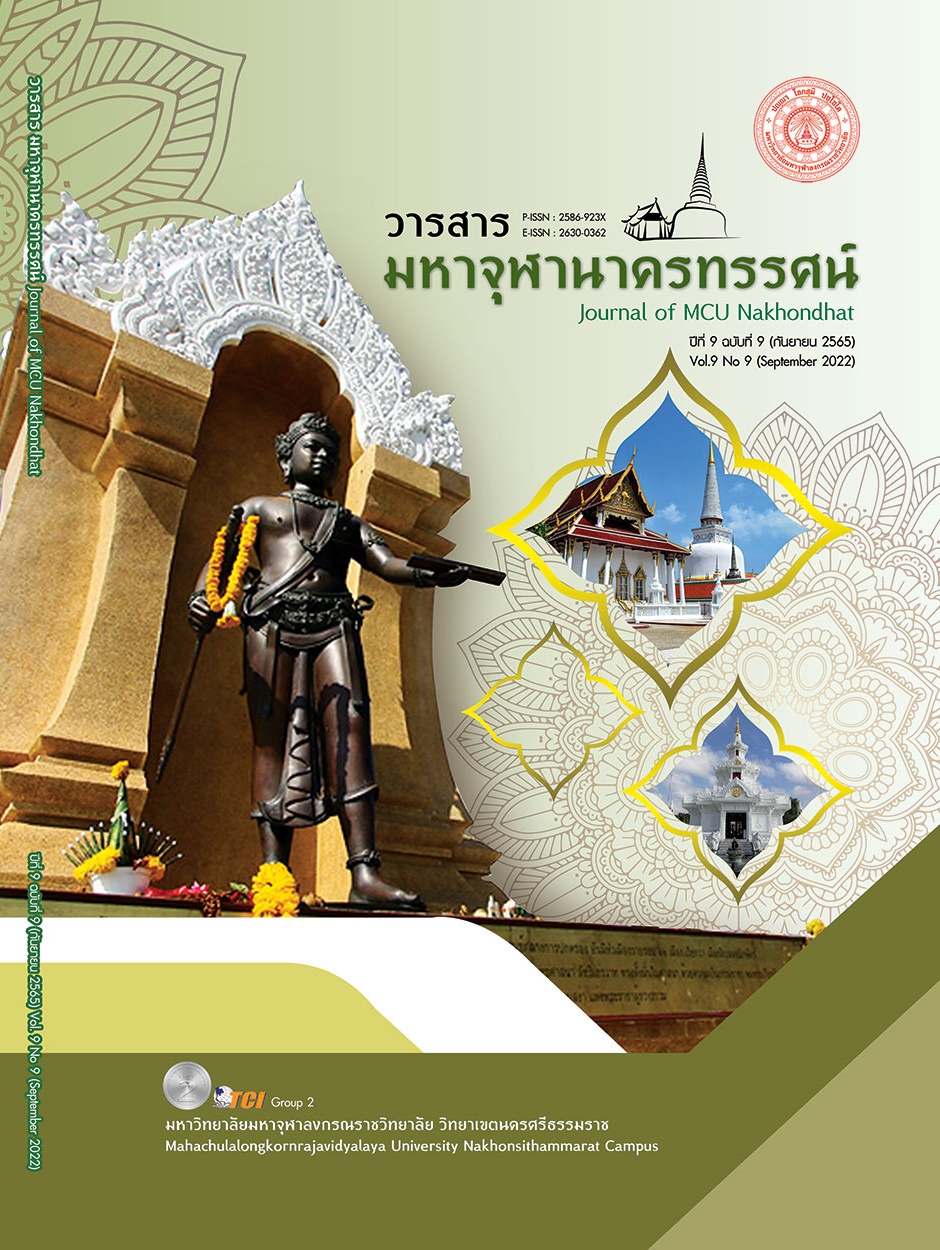THE DEVELOPMENT OF MATHEMATICS LEARNING ACTIVITIES ON LINEAR EQUATION BASED ON CONSTRUCTIVIST THEORY SUPPLEMENTED BY POYA’S PROBLEM SOLVING PRACTICE FOR MATHAYOMSUKSA 1 STUDENTS
Main Article Content
Abstract
The purposes of this research were: 1) to develop of Mathematics learning Activities on linear equation based on constructivist theory supplemented by Polya’s problem-solving practice, 2) to study and compare students’ learning achievement in Mathematics before and after learning through the constructivist theory supplemented by the practice of Polya’s problem-solving skill and 3) to study the Matthayomsuksa 1 students’ abilities to solve mathematical problem through the constructivist theory by the practice of Polya’s problem-solving skill. A mixed method study was divided into 3 operating cycles implemented among 36 students of Matthayomsuksa 1 which were selected by purposive sampling method. The results of this study were shown as follows: 1. The development of Mathematics learning activities on basic data analysis by constructivist theory supplemented by the practice of Polya’s Problem-solving skill were 5 essential stages. 2. Students had the posttest learning achievement score by using constructivist supplemented with skill Polya's Problem-solving practice was not less than 75 percent. The posttest learning achievement score was higher than the pretest score. 3. Students had the posttest ability on mathematical problems solving after learning by using constructivist supplemented with skill Polya’s Problem-solving practice score was not less than 75 percent.
Article Details

This work is licensed under a Creative Commons Attribution-NonCommercial-NoDerivatives 4.0 International License.
References
Kemmis, S. and McTaggart, R. (1988). The action research planner. Geelong: Deakin University Press.
Polya, G. (1957). How to solve it. (2nded.). New York: Doubleday.
ณัฐกฤตา ห้วยทราย. (2563). การพัฒนากิจกรรมการเรียนรู้ตามกระบวนการแก้ปัญหาของโพลยาที่ส่งเสริมความสามารถในการแก้โจทย์ปัญหาทางคณิตศาสตร์ เรื่อง สมการเชิงเส้นตัวแปรเดียวของนักเรียนชั้นมัธยมศึกษาปีที่ 1. วารสารศึกษาศาสตร์มหาวิทยาลัยบูรพา, 2(1),120-132.
ทิศนา แขมมณี. (2556). ศาสตร์การสอน: องค์ความรู้เพื่อการจัดกระบวนการเรียนรู้ที่มีประสิทธิภาพ. (พิมพ์ครั้งที่ 17). กรุงเทพมหานคร: จุฬาลงกรณ์มหาวิทยาลัย.
พลอยไพริน ศิริพัฒน์ และคณะ. (2562). การพัฒนาผลสัมฤทธิ์ทางการเรียนในการแก้โจทย์ปัญหา เรื่อง การประยุกต์ของสมการเชิงเส้นตัวแปรเดียวของนักเรียนชั้นมัธยมศึกษาปีที่ 2 โดยใช้รูปแบบการแก้โจทย์ปัญหาตามแนวคิดของโพลยา. วารสารวิทยาศาสตร์และวิทยาศาสตร์ศึกษา, 2(1),23-33.
โรงเรียนพรเจริญวิทยา. (2561). รายงานผลสัมฤทธิ์ทางการเรียนการวัดและประเมินผลคะแนน o-net ประจำปี 2561 – 2563. บึงกาฬ: โรงเรียนพรเจริญวิทยา.
โรงเรียนพรเจริญวิทยา. (2563). รายงานประกันคุณภาพการศึกษากลุ่มงานบริหารวิชาการโรงเรียนพรเจริญวิทยา. บึงกาฬ: โรงเรียนพรเจริญวิทยา.
สถาบันส่งเสริมการสอนวิทยาศาสตร์และเทคโนโลยี. (2555). คู่มือครูรายวิชาคณิตศาสตร์พื้นฐาน คณิตศาสตร์ เล่ม 2 ชั้นมัธยมศึกษาปีที่ 1 กลุ่มสาระการเรียนรู้คณิตศาสตร์ตามหลักสูตรแกนกลางการศึกษาขั้นพื้นฐาน พุทธศักราช 2551 ปรับปรุง 2560. กรุงเทพมหานคร: ชุมนุมสหกรณ์สวัสดิการครูและบุคลากรทางการศึกษา.
สำนักงานคณะกรรมการพัฒนาการเศรษฐกิจและสังคมแห่งชาติ สำนักนายกรัฐมนตรี. (2559). แผนพัฒนาเศรษฐกิจและสังคมแห่งชาติ. (ฉบับที่12). กรุงเทพมหานคร: สำนักงานคณะกรรมการพัฒนาการเศรษฐกิจและสังคมแห่งชาติ สำนักนายกรัฐมนตรี.
สิริพร ทิพย์คง. (2545). การพัฒนารูปแบบการสอนพีชคณิตสําหรับนักเรียนชั้นมัธยมศึกษาตอนต้น. กรุงเทพมหานคร: ภาควิชาการศึกษา มหาวิทยาลัยเกษตรศาสตร์.
สุนีย์ เหมะประสิทธิ์. (2543). การวิจัยเชิงปฏิบัติการ. กรุงเทพมหานคร: คุรุสภาลาดพร้าว.


